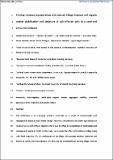Por favor, use este identificador para citar o enlazar a este item:
http://hdl.handle.net/10261/256440COMPARTIR / EXPORTAR:
 SHARE SHARE
 CORE
BASE CORE
BASE
|
|
| Visualizar otros formatos: MARC | Dublin Core | RDF | ORE | MODS | METS | DIDL | DATACITE | |

| Título: | Pruning residues incorporation and reduced tillage improve soil organic matter stabilization and structure of salt-affected soils in a semi-arid Citrus tree orchard |
Autor: | García-Franco, Noelia CSIC; Wiesmeier, Martin; Colocho Hurtarte, Luis Carlos; Fella, Franziska; Martínez-Mena García, M. Dolores CSIC ORCID; Almagro, María CSIC ORCID; García Martínez, Eloisa; Kögel-Knabner, I. | Palabras clave: | Drip-irrigation Particulate organic matter aggregate stability Semi-arid agroecosystems Irrigation Soil organic carbon |
Fecha de publicación: | 14-jul-2021 | Editor: | Elsevier BV | Citación: | Soil and Tillage Research 213: 105129 (2021) | Resumen: | Soil salinization is an emerging problem worldwide as a result of unsustainable land management practices and climate change. However, salt-affected soils under agricultural use could act as a C sink if these negative effects can be offset by combination of sustainable land management practices (SLM). In this study, we assessed the effect of (i) intensive tillage along with flood irrigation (IT); (ii) combination of no-tillage with pruning residues (branches and leaves) as mulch, and drip-irrigation (NT + PM); and (iii) combination of reduced tillage with the incorporation of pruning residues and drip-irrigation (RT + PI), on physico-chemical soil parameters, aggregate stability, amount and quality of organic matter fractions and soil organic carbon (SOC) sequestration in a lemon tree orchards (Citrus limon var. Verna) under semi-arid climate conditions. The RT + PI management system showed a decrease in salinity and bulk density, and increased soil porosity, soil OC and N stocks, and percentage of OC-rich macroaggregates as compared to the IT system. The aggregate-occluded particulate organic matter fraction (oPOM) played a key role in macroaggregate stability. The NT + PM treatment also showed positive effects on the investigated soil properties, but this was limited to the upmost topsoil (0−5 cm). The IT management system revealed highest values of salinity and bulk density, and considerably lower SOC stocks. Moreover, a degradation of soil structure with a low percentage of macroaggregates depleted in SOC was observed. We conclude that the incorporation of pruning residues in combination with reduced tillage and drip-irrigation is an effective management system to improve soil structure and facilitate SOC sequestration. Therefore, conventional management systems based on intensive tillage and flood irrigation should be abandoned in salt-affected soils under semi-arid climate conditions in favour of systems with higher organic matter inputs incorporated into the soil combined with measures to reduce the salt content. | Versión del editor: | http://dx.doi.org/10.1016/j.still.2021.105129 | URI: | http://hdl.handle.net/10261/256440 | DOI: | 10.1016/j.still.2021.105129 | Identificadores: | doi: 10.1016/j.still.2021.105129 issn: 0167-1987 |
| Aparece en las colecciones: | (CEBAS) Artículos |
Ficheros en este ítem:
| Fichero | Descripción | Tamaño | Formato | |
|---|---|---|---|---|
| GFranco2021SoilTilRes.pdf | 1,93 MB | Adobe PDF |  Visualizar/Abrir |
CORE Recommender
SCOPUSTM
Citations
26
checked on 22-abr-2024
WEB OF SCIENCETM
Citations
22
checked on 26-feb-2024
Page view(s)
46
checked on 01-may-2024
Download(s)
127
checked on 01-may-2024
Google ScholarTM
Check
Altmetric
Altmetric
Este item está licenciado bajo una Licencia Creative Commons

